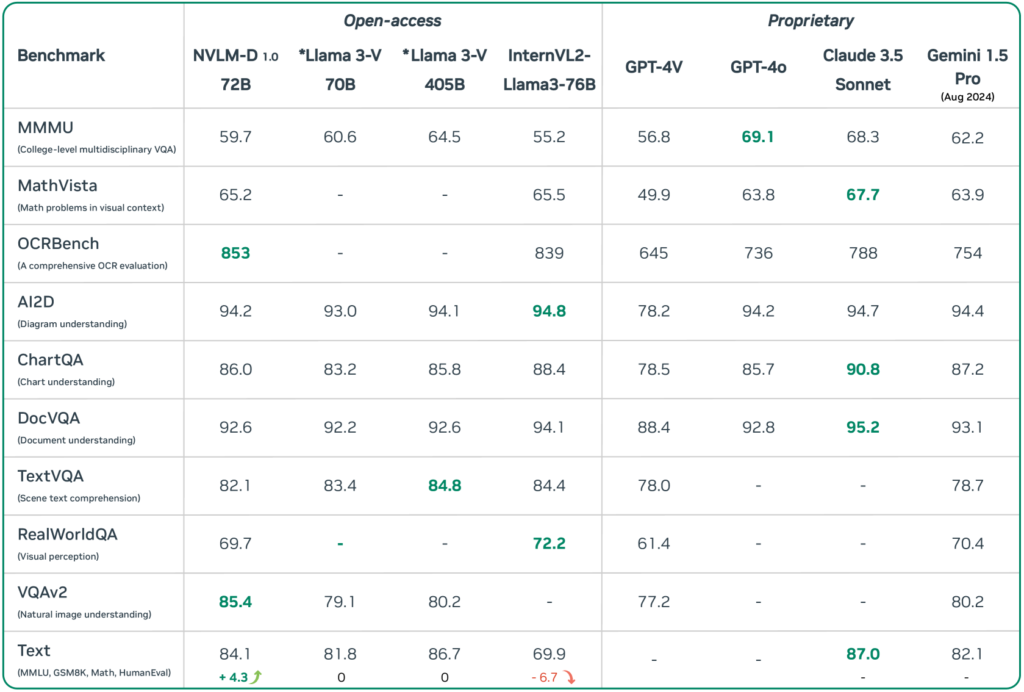
Nvidia has introduced a groundbreaking open-source artificial intelligence model, poised to rival industry-leading systems like OpenAI’s GPT-4. This new development, named the NVLM 1.0 family, is headlined by the NVLM-D-72B, a multimodal large language model that excels across both vision and language tasks. With 72 billion parameters, the NVLM-D-72B delivers top-tier performance in both areas, showcasing its capability to process visual inputs like memes and images alongside traditional text-based tasks, such as solving math problems with step-by-step precision.
The researchers behind NVLM 1.0 emphasized its competitive nature, positioning it alongside proprietary models. They pointed out the model’s ability to enhance performance in text-only tasks after multimodal training, achieving a 4.3-point improvement across key benchmarks. This stands in contrast to similar models, which often experience diminished text accuracy following multimodal training.

Nvidia’s decision to open-source the model represents a notable departure from the norm, where leading-edge AI models are typically closed off to the public. By making both the model weights and the training code accessible, Nvidia has provided researchers and developers with unprecedented tools to advance AI research. This move has been met with enthusiasm from the AI community. Some researchers have compared the NVLM-D-72B to Meta’s LLaMA 3.1 model, noting its high-level performance in math and coding tasks, while also integrating vision processing—a rare combination.
The NVLM project introduces several innovative architectural features, including hybrid multimodal processing techniques, which could influence future research directions in the field. While the open-source release has been hailed as a significant step forward, it also introduces potential challenges. With such powerful AI technology now publicly available, concerns about ethical use and potential misuse have surfaced, underscoring the need for responsible AI development.
Nvidia’s open-source initiative may also impact the broader AI industry’s structure. If high-performing models like NVLM 1.0 are freely accessible, companies could face pressure to rethink their business models, as smaller organizations and independent researchers gain access to tools that were previously restricted to tech giants. Nvidia’s move has opened a new chapter in AI development, with potential far-reaching consequences for how AI progress unfolds in the near future.
Featured Image courtesy of DALL-E by ChatGPT
Follow us for more updates on Nvidia.
